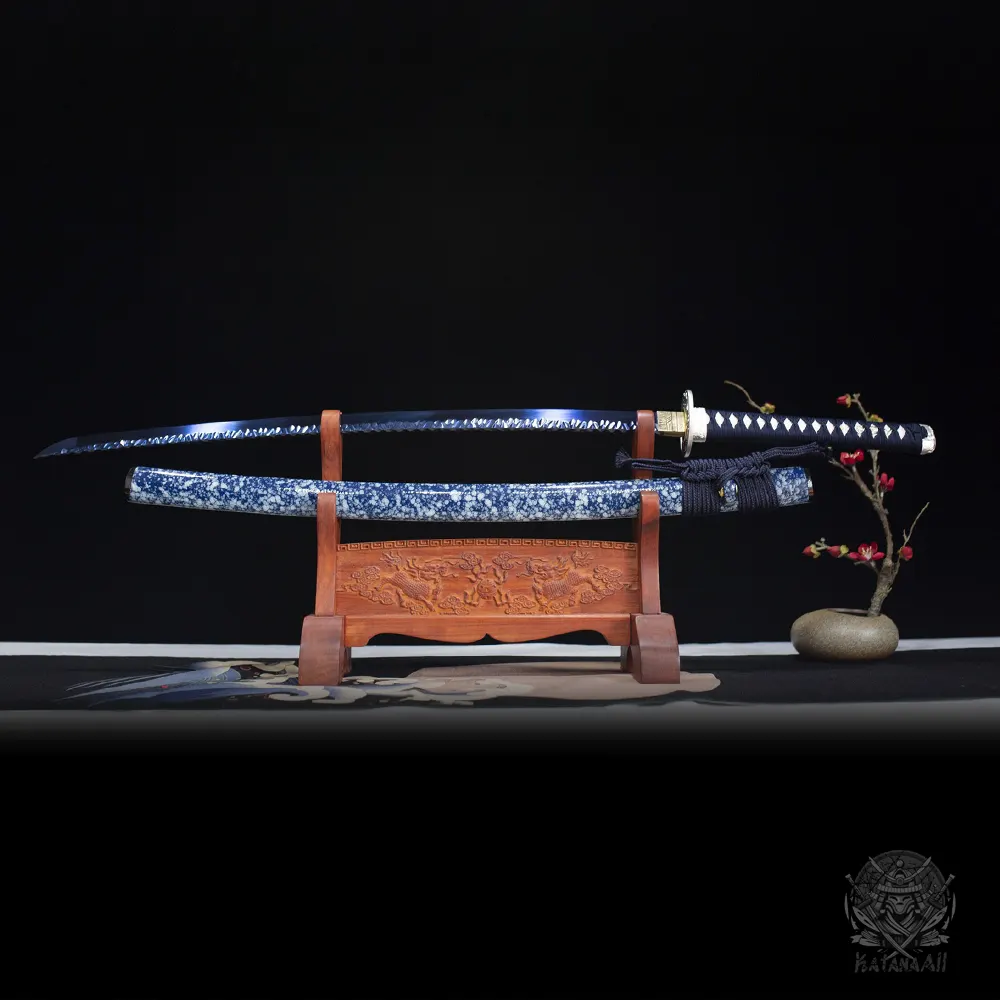Combat Swords: Why the Katana is the Ultimate Weapon for Warriors

Introduction
When it comes to combat swords, few are as iconic and revered as the katana. Known for its lethal efficiency, unparalleled craftsmanship, and cultural significance, the katana has earned its place as one of the most formidable swords in the world. Whether for historical reenactments, martial arts practice, or collecting, the katana remains a symbol of the samurai’s discipline, strength, and precision. But how does the katana compare to other combat swords, and why is it considered the ultimate weapon for warriors? In this article, we’ll explore the unique characteristics of the katana, its advantages in combat, and why it continues to be a favored choice for sword enthusiasts.
The History and Legacy of the Katana
The katana is a Japanese sword that was originally developed in the late Heian period (794-1185). It became the weapon of choice for samurai warriors due to its unique design, effectiveness in battle, and ease of use. Over centuries, swordsmiths refined their techniques, and the katana evolved into a weapon that could be used effectively in both close and ranged combat. Its cutting ability, especially with a single, swift motion, became a defining feature of the katana. Unlike other swords of the era, the katana’s curved blade allowed for smoother, faster strikes.
While many swords were used in battle, the katana became synonymous with the samurai code of bushido, a code emphasizing loyalty, courage, and honor. The katana is often viewed as not just a weapon, but an extension of the samurai’s spirit and a symbol of their status and discipline.
Why the Katana is a Superior Combat Sword
In modern discussions of combat swords, the katana often stands out for its design, versatility, and effectiveness in battle. Let’s explore the key features that make the katana such a powerful combat weapon.
| Feature | Description |
|---|---|
| Curved Blade | The katana’s slightly curved blade allows for efficient slicing and cutting. This shape reduces the resistance of the blade when striking and allows for more fluid, swift cuts. |
| High-Carbon Steel Construction | The blade is traditionally made from high-carbon steel, a material that’s both strong and flexible. This allows the katana to maintain a sharp edge while being tough enough to withstand the stresses of combat. |
| Single Edge | Unlike many swords that are double-edged, the katana has a single edge, which makes it more lightweight and easier to handle in one hand. The blade is razor-sharp, making it highly effective for cutting through armor and opponents. |
| Full Tang Design | The katana is built with a full tang, meaning the blade extends all the way through the handle. This provides additional strength, balance, and durability, ensuring that the katana can withstand the force of battle. |
| Precision Cutting | The katana’s unique forging process includes folding the steel to create multiple layers, enhancing the blade’s cutting capabilities. The sharpness of the katana, combined with the precision of its design, allows it to easily cut through opponents in one swift motion. |
The Katana’s Performance in Combat
The katana is often regarded as the most effective sword in hand-to-hand combat. Its design allows for speed, precision, and versatility. Here are a few reasons why the katana excels in combat:
1. Speed and Agility
One of the most significant advantages of the katana in combat is its speed. The combination of its lightweight, curved blade and single edge allows for lightning-fast strikes. A well-trained swordsman can execute rapid slashes and parries, overwhelming an opponent with swift movements.
2. Cutting Ability
The katana’s edge is sharpened to an incredibly fine point, making it ideal for slicing through both flesh and bone. The speed of the blade combined with its sharpness means that a katana-wielding warrior can cut through an opponent’s defenses in a single, fluid motion.
3. Balance and Control
The katana is perfectly balanced for combat, with the weight primarily concentrated in the blade. The handle (tsuka) is carefully designed to allow the swordsman to maintain maximum control over the sword during strikes, thrusts, and defensive maneuvers. This balance makes the katana highly versatile in a variety of fighting scenarios.
4. Defensive Capabilities
Despite its offensive power, the katana is also well-suited for defense. The swordsman can use the flat side of the blade to deflect attacks, while the sharp edge is always ready for a counterattack. The katana’s balance and flexibility give the warrior the ability to block incoming strikes and respond with precision.
Comparing the Katana to Other Combat Swords
While the katana is often considered the best sword for hand-to-hand combat, how does it compare to other types of combat swords? Let’s look at a few other popular swords used in battle:
| Sword | Advantages | Disadvantages |
|---|---|---|
| European Longsword | Offers versatility with both cutting and thrusting capabilities. Suitable for heavy armor combat. | Heavier than the katana and requires more strength and stamina to wield. |
| Scimitar | Its curved blade is similar to the katana, designed for swift, slashing attacks. | Not as versatile as the katana and lacks the same cutting power for heavier targets. |
| Rapier | Excellent for thrusting in duels and one-on-one combat. | Lacks cutting power, making it less effective against armored opponents. |
| Sabre | Lightweight and excellent for slashing. Often used by cavalry in battle. | Lacks the fine cutting edge of the katana and isn’t as effective in close combat as the katana. |
As seen in the comparison table, while other combat swords like the longsword and sabre have their advantages, the katana excels in cutting efficiency, precision, and speed, making it the ultimate weapon for a swordsman skilled in Japanese martial arts.
Why the Katana is Still a Popular Combat Sword Today
While modern weaponry has largely replaced the katana for practical use, this sword remains a popular choice among martial artists and collectors. In disciplines like Kendo, Iaido, and Kenjutsu, the katana is still practiced and revered for its historical significance and effectiveness in combat. Martial artists continue to train with real and practice katana to hone their skills, as it remains the most efficient and graceful weapon for training and competition.
For collectors, the katana is considered a work of art. The blade’s craftsmanship, the history behind each sword, and its symbolic value as the warrior’s weapon make it a prized possession.
Conclusion
The katana has earned its place as one of the finest combat swords in the world due to its unique design, cutting ability, and effectiveness in battle. With its curved blade, sharp edge, balanced structure, and history steeped in samurai culture, the katana stands out as the ultimate weapon for warriors—both on the battlefield and in modern martial arts. Whether for combat training, collection, or as a symbol of tradition, the katana remains a revered and respected sword. Its enduring legacy is a testament to its excellence and functionality, making it a sword like no other.
